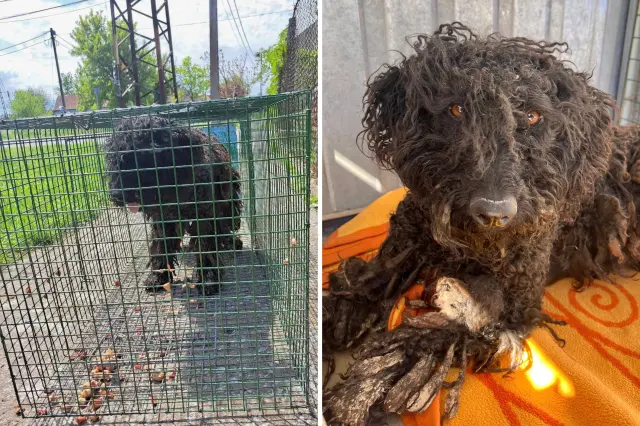-
Dodgers Predicted to Make ‘Villainous’ Signing at Winter Meetings - 18 mins ago
-
Benin Coup Attempt to Oust Talon Has Been Foiled, Interior Minister Says - 24 mins ago
-
Virginia Tech, James Franklin Looking to Make Surprising Coaching Move - 54 mins ago
-
Presidential Power Gets Tested Before Supreme Court After Long Conservative Project to Shrink Agencies - about 1 hour ago
-
Student Loan Delinquencies Surge to Alarming Levels—Credit Score Report - about 1 hour ago
-
Not All Targeted Killings Are the Same. Hegseth’s Boat Strikes Are Illegal. - 2 hours ago
-
Congress Rewrites Hemp Definition, Reshaping Cannabis Rules - 2 hours ago
-
Pacific Palisades residents preserve community with block party - 2 hours ago
-
Your Gift Dilemmas, Solved - 3 hours ago
-
Woman’s Gift for Best Friend 25 Years in the Making Has Strangers in Tears - 3 hours ago
I Adopted a Nervous Dog—I Can’t Believe What She Did on Her First Day
When I adopted my dog last month, I was prepared for a challenge. After writing countless stories about rescue animals and reading her advert, I expected days of hiding, slow trust-building, and tentative steps toward affection.
Instead, she strutted into our home in Birmingham, England (after four days of traveling) as if she’d lived there her whole life. Within half an hour, she was playing fetch; two hours later, she was laying on her back, demanding belly rubs.
Since then, we’ve been inseparable. It feels as if Priscilla, a black poodle cross, has always been part of our family. What’s most surprising is how calm and trusting she is, given her past.
An extract from the original Facebook post shared by HunDogs For Rehoming—a U.K.-based charity that rescues dogs from Hungary and brings them more than 1,460 miles to their new homes—explains: “She was [found] in [a] heartbreaking condition—matted from head to toe, her fur infested with ticks, frightened and shut down.

“She had to be humanely trapped, as she was terrified of people after so much neglect.”
Weeks earlier, she was found with four tiny pups that were rescued without her, making her capture even more urgent.
Priscilla, who is about 18 months old, was then placed with a foster carer who did an incredible job building her confidence and teaching her how to live in a home—something she had likely never experienced before.
Studies show that fostering programs have huge benefits for animals. They ease overcrowding in shelters, lower the spread of disease, and reduce the chances that abandoned or stray animals will be put down. In the U.S., research has found that dogs who spend time in foster care are more likely to be adopted and less likely to be euthanized. Many rescue groups and shelter workers say fostering plays a vital role in saving lives and helping animals find permanent homes.

I know not everyone will have an experience like mine. I often say I’ve won the puppy jackpot. But without her foster carer, my story might have been very different. I was told Priscilla shook like a leaf when she was first rescued, but after lots of TLC and patient training, she became the perfect house guest—one who simply cannot relax without a pillow to rest her head.
She has only had one accident indoors—on her first day, likely marking her territory—and never again since. I was advised to stay inside with her for a few days to let her decompress, but, after just 24 hours, she was keen to check out her new area.
A few days later, we even completed our first 3k jog together, followed by plenty of cozy nights with her curled up in her bed beside mine.
Since then, a string of firework events has encouraged her to upgrade to my bed, and she hasn’t left since. She loves long walks but is just as happy to lounge around all day, join me for coffee shop afternoons, or visit friends and family.
I think she’s simply grateful for her second chance—and she’s made the most of it, settling beautifully into her new life.
Reference
Roseveare, Christine, et al. “Companion Animal Fostering as Health Promotion: A Literature Review.” International Journal of Environmental Research and Public Health, vol. 20, no. 13, June 2023, p. 6199. PubMed Central, https://doi.org/10.3390/ijerph20136199.
Source link




















